

New missiles could reach Chinese coast
Japan's decision to develop surface-to-sea missiles with a range of 300 kilometers to cover the disputed islands shows the country may be eyeing a shift to an offensive posture, analysts said.
The Japanese government has decided to develop the missiles to "protect the nation's isolated islands," including the disputed Diaoyu Islands, the Yomiuri newspaper reported.
Development costs will be part of the Defense Ministry's budget request for the fiscal year ending March 2018, and the weapons are set to be deployed on islands, such as Miyako, in Japan's southernmost Okinawa prefecture by 2023.
"Japan is trying to use the missile system to lock down the Miyako Strait and prevent Chinese forces from entering the Western Pacific Ocean," Zhou Yongsheng, a professor at the Institute of International Relations of China Foreign Affairs University, told the Global Times.
He said if the reported 300-kilometer range is true, it would mean Japan is ready for a hard fight. "The range is higher than that of Russia's S-300 surface-to-air missile system, and better than China's current surface-to-air missile system," Zhou said.
Da Zhigang, director of the Institute of Northeast Asian studies at the Heilongjiang Academy of Social Sciences, said the 300-kilometer range missiles could target China's coastal areas.
"If China launches a strategic weapon or if a ship departs from China's coastal areas in Zhejiang Province, they would be within the missiles' range," he told the Global Times.
Da said the missiles are similar to South Korea's recent deployment of the THAAD system, as both would spark a regional arms race.
"Though Japan claims it is for defense purposes, the missiles increase Japan's capability to shift from a defensive to an offensive posture," Da said.
State broadcaster NHK reported Japan's Defense Ministry is inclined to hasten efforts to deploy a THAAD battery in the wake of North Korea's recent missile launches.
G20 factor
On Saturday, a Japanese government source said Chinese fighter jets have been approaching the Diaoyu Islands since May, Japanese media reported.
In response, Tokyo scrambled Air Self-Defense Force fighter jets, the source said, calling such moves by Chinese aircraft "abnormal." Chinese warplanes have flown near the islets more than three times since late May, the source said.
Earlier this month, 230 Chinese fishing boats and a dozen China Coast Guard vessels were spotted near the Diaoyu Islands, according to Kyodo News.
Zhou said China's recent activities near the Diaoyu Islands are part of efforts to counter Japan's meddling in the South China Sea issue.
Last week, Japanese Foreign Minister Fumio Kishida met his Philippine counterpart Perfecto Yasay in the southern Philippine city of Davao, where both pledged to work closely to boost maritime security while facing separate sea disputes with China, AFP reported.
Kishida's visit to Manila shows that Japan is encouraging the Philippine government to pursue the former administration's policy against China, while spreading the misleading message that China has no intention to repair its souring relationship with Japan, experts said.
The friction comes ahead of next month's Group of 20 summit in China, where there has been talk of a potential meeting between Chinese President Xi Jinping and Japanese Prime Minister Shinzo Abe.
Zhou said the G20 summit might temporarily ease tensions between the two countries.
This year's trilateral summit between China, Japan and South Korea, expected to be held in November, will also be an opportunity for the three countries to mend their ties, Zhou said.
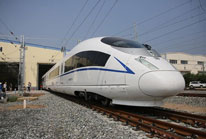 World's fastest bullet train to start operating next month
World's fastest bullet train to start operating next month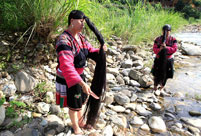 Huangluo: China's 'long hair village'
Huangluo: China's 'long hair village'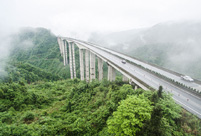 Spectacular bridge with one of the tallest piers in the world
Spectacular bridge with one of the tallest piers in the world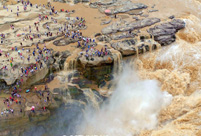 Magnificent view of Hukou Waterfall
Magnificent view of Hukou Waterfall A glimpse of Stride 2016 Zhurihe B military drill
A glimpse of Stride 2016 Zhurihe B military drill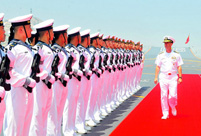 US Navy chief tours Liaoning aircraft carrier
US Navy chief tours Liaoning aircraft carrier Chinese American woman wins Miss Michigan
Chinese American woman wins Miss Michigan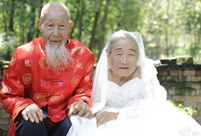 Centenarian couple takes first wedding photos
Centenarian couple takes first wedding photos Traditional Tibetan costumes presented during fashion show
Traditional Tibetan costumes presented during fashion show Top 10 livable Chinese cities
Top 10 livable Chinese cities Top 20 hottest women in the world in 2014
Top 20 hottest women in the world in 2014 Top 10 hardest languages to learn
Top 10 hardest languages to learn China’s Top 10 Unique Bridges, Highways and Roads
China’s Top 10 Unique Bridges, Highways and Roads China, Russia should join to foil THAAD
China, Russia should join to foil THAAD Party warns of attempts to foment revolution after rights lawyer trial
Party warns of attempts to foment revolution after rights lawyer trial Biting the bait to see what the soothsayers outside Buddhist temples actually do
Biting the bait to see what the soothsayers outside Buddhist temples actually do Chinese death taboo makes it hard to develop care homes despite aging society
Chinese death taboo makes it hard to develop care homes despite aging societyDay|Week